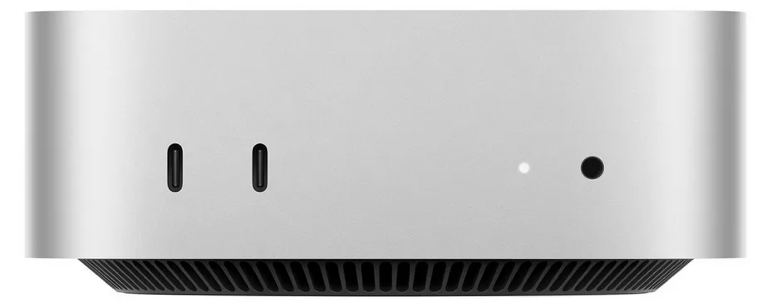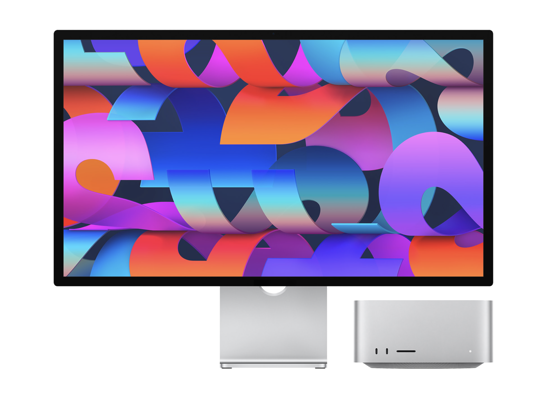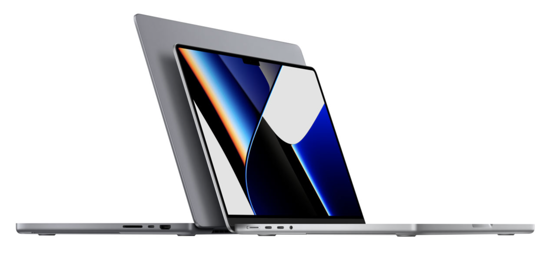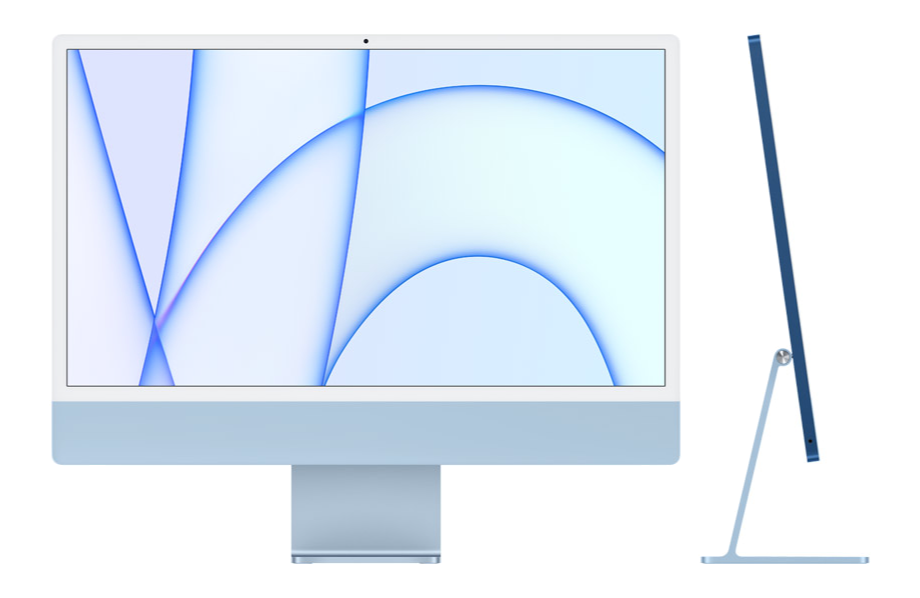News


Mac Mini M4
08/11/2024
A major redesign of the Mac Mini, which is significantly smaller and resembles a miniaturised version of the Mac Studio.
The smaller design also features for the first time USB-C ports on the front and three Thunderbolt 4 or 5 ports on the back. There are no USB-A ports.
The M4 chip makes the Mac Mini a highly powerful machine in an exceptionally compact form factor. The base model now includes a minimum of 16GB of RAM. The M4 Pro version includes a minimum of 24GB of RAM a 12-core CPU with 16 graphics cores and can be optionally purchased with 14/20 cores.
The internal SSD storage can be upgraded using third-party upgrades, although it is considerably simpler to attach an external NVM-based Thunderbolt drive.
MacBook Air (M2)
6/6/2022
Apple have introduced a new MacBook Air powered with their new M2 processor.
• 12 processor cores and 8 or 10 graphics cores
• 8GB, 16GB or 24GB of unified memory, shared with both the processor and the GPU
• ProRes accelerators for hardware-accelerated video encode and decode
• 13.6-Inch display with 500 nits (224 ppi)
• 1080p webcam (with notch)
• MagSafe Connector (for charging)
• Keyboard with full size function keys and fingerprint reader
• Silver or Space Grey plus new Starlight and Midnight
Mac Studio
08/03/2022
Apple have announced their new Mac Studio computer and Apple Studio 27” display.
The Mac Studio is basically a larger, faster Mac Mini, available with either the M1 Max or the M1 Ultra. The M1 Ultra is two M1 Max’s connected together, giving twice the number of processor/GPU cores.
The Apple Studio display is a 5K 27” monitor in a very smart Apple looking design. Included is a triple microphone system, a 12 megapixel webcam and a six-speaker sound system, all powered via an A13 CPU.
MacBook Pro
24/10/2021
Apple have updated their more expensive MacBook Pro range, releasing a MacBook Pro 14" and MacBook Pro 16". Both sizes of MacBook Pro have either an M1 Pro or M1 Max processor, which are significantly faster than the Intel processors previously used. Specifications include:
• 8 or 10 processor cores and 14, 16, 24 or 32 graphics cores
• 16GB, 32GB or 64GB of unified memory, shared with both the processor and the GPU
• ProRes accelerators for hardware-accelerated video encode and decode
• Displays with adaptive refresh up to 120Hz, 1000 nits sustained brightness and 1600 nits peak
• 6 speaker sound system
• 1080p webcam (with notch)
• HDMI and SD Card slots, MagSafe Connector
• Keyboard with full size function keys and fingerprint reader
iMac 24” M1
20/04/2021
Apple have now launched their iMac M1 24”. This uses the same processor as the MacBook Air and MacBook Pro 13”.
Specification includes:
• 24-inch 4.5K Retina display
• 7 Different colours
• New keyboard with finger print reader
• M1 Processor, 8 or 16 GB of unified RAM, SSD storage
• 2 or 4 USB-C ports, 2 x Thunderbolt 3
• Ethernet port located in the external p
LabVIEW Community Edition
17/01/2021
The LabVIEW Community editions for both Mac and Linux have now been released.
LabVIEW NXG
16/01/2021
National Instruments have taken the tough decision to discontinue the development of LabVIEW NXG. The better parts of LabVIEW NXG will be incorporated into standard LabVIEW.
This is good news for Mac and Linux users as LabVIEW NXG was Windows only. Now would be a good time to announce that a Linux/Mac version of TestStand is being considered.
Apple Silicon (M1) Macs
27/12/2020
Three Macs were released in December 2020 which use the new M1 chip from Apple instead of the Intel i3/i5/i7/i9 series of CPU. The MacBook Air 13”, MacBook Pro 13”, and the Mac mini. All three machines look nearly identical on the outside to the Intel based machines they have replaced.
The M1 processor is a laptop/desktop version of the A series processors which are used in Apple products such as the iPhone, iPad and Apple TV. It includes 8 processor cores (4 high performance, 4 energy efficient), 7 or 8 graphics cores, 8GB or 16GB of RAM, an image signal processor, NVMe controller, thunderbolt 4 controller, secure enclave, plus many other functions, all integrated into one IC.
One of the main advantages of the M1 is performance, the high performance cores have achieved some of the highest single core benchmark results ever seen. The single chip design allows the unified memory (RAM) to be accessed simultaneously and at very high speed by all the different sections of the M1 processor, removing the need to move data between say the CPU and GPU.
The M1 MacBook Air is claimed to be around 3.5 times faster than the older Intel MacBook Air it has replaced, with up to 5 times the graphics performance.
The other advantage of the M1 is its low power consumption, which allows an M1 powered laptop to easily run for a full day on a single charge (18 hours for the MacBook Air). This has also reduced operating temperatures. The MacBook Air has not been fitted with a fan, it is now completely silent, and the fan on the MacBook Pro and Mac mini very rarely operate at more than minimum speed.
So far reviews of the M1 range of machines have been very good. Performance is excellent, the machines are cool and silent, and battery life is superb.
Applications are slowly being updated to contain both M1 and Intel code resources, and Intel only applications can still be run by using technology in Big Sur which converts the Intel code to M1 code before an application starts. The M1 machines can also directly run a large number of iPad and iPhone applications.
Over the next couple of years Apple are planning on replacing all of the existing Intel based machines with M1 based (Apple Silicon) machines. Newer versions of the M1 processor will probably include more processor and graphics cores plus more memory. It is not yet known if Apple will continue to include dedicated graphics cards in the higher end machines, or replace them with more graphics cores within the processor itself or introduce an Apple Silicon based graphics card.
These new machines are the start of something big for Apple. Any new Macs will now not only be very well designed, well constructed and easy to use, but will also be incredibly powerful, quiet, and with superb battery life. Other manufacturers will have trouble competing unless they also start designing their own range of highly efficient, highly integrated processors.
LabVIEW Community Edition
01/12/2020
The LabVIEW community edition has been released. This is a free to use version of LabVIEW Pro which enables private individuals to use LabVIEW for free. It is strictly for non-commercial use.
The LabVIEW Community edition includes:
• LabVIEW Community edition and LabVIEW NXG Community edition
• All of the functionality of the LabVIEW Professional editions (including the application builder)
• The LINX toolkit for use with Raspberry Pi, BeagleBoard, and Arduino
• Access to the LabVIEW NXG Web Module for creating web-based applications
For further information go to the NI website:
https://www.ni.com/en-gb/shop/labview/select-edition/labview-community-edition.html
The LabVIEW community edition includes both standard LabVIEW and NXG, and presently is only available for Windows (Mac or Linux will follow later, hopefully).



